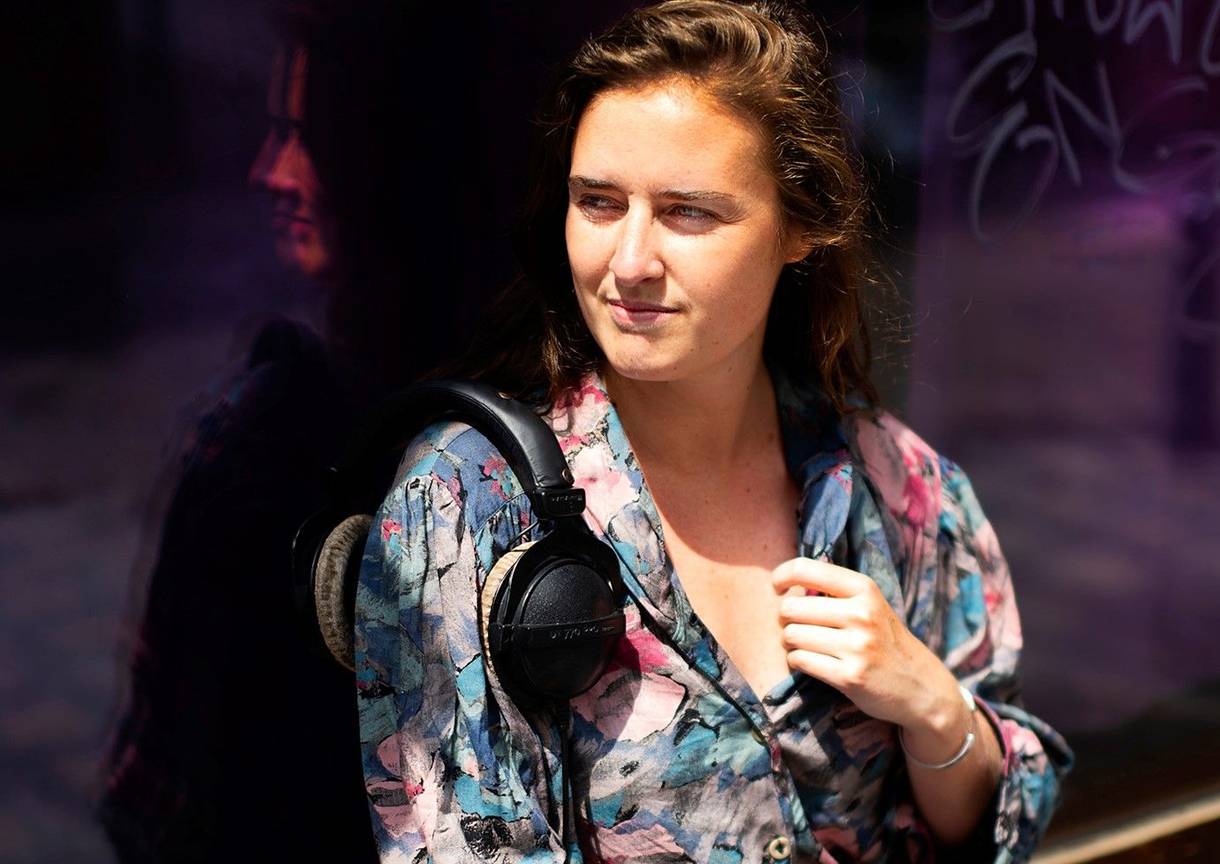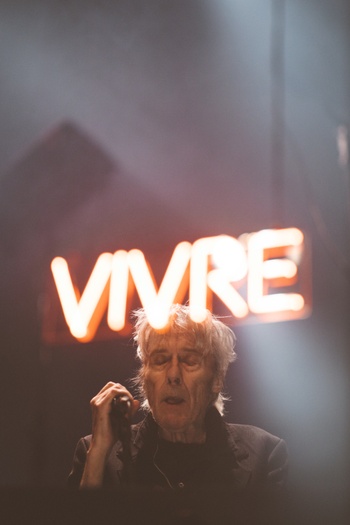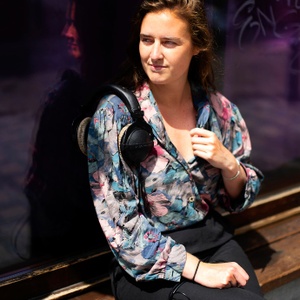Michelle Geerardyn traversed the Ancienne Belgique before, during and after the lockdowns with her camera. That the need for closeness and depth was felt more than ever in those months is something that the “Proche” exhibition hints at.

© Ivan Put
Michelle Geerardyn: 'A portrait photograph is always the result of a deeper connection'
Michelle Geerardyn
- Born in 1993 in Bruges
- Takes her first music photos at the Cactus Festival and in the Cactus Club in Bruges during her studies in veterinary medicine at the University of Ghent
- In 2017, she starts writing articles and taking photos for the music website Indiestyle
- Has been the Ancienne Belgique’s house photographer since 2019
- Writes for photography platform BreedBeeld and is studying for the Master in Gender and Diversity at the University of Ghent
“From the moment I get up to the moment I go to sleep, there is music on,” is how Michelle Geerardyn (29) describes her obsession with music. It started around the age of 16 and was somewhat tempered during her studies in veterinary medicine, but once in your system, it is hard to get rid of. After the first tentative steps in music journalism and concert photography, music has come to dominate her life even more, with her period as in-house photographer of the Ancienne Belgique as the provisional apotheosis. “During the Cactus Festival in Bruges, I used to stand right at the front with my little camera. When I started writing articles for the music website Indiestyle, I got more and more requests for photos too. After a while, I found myself always on the road with my camera.”
Following a successful cooperation with the previous in-house photographer of the Ancienne Belgique at the BRDCST festival in 2019, she applied to take over from him. Did she know then what was in store for her? But Covid did not knock this introverted woman from West-Flanders off balance. "For the first six months, things remained the same and I could continue to photograph the normal concert experience. Covid actually allowed me to capture some historic moments, such as a concert hall and stage full of students studying for their exams. I don't want to romanticise anything, but the slowness of that period suited my personality better. I can never just take someone's photograph. During the pandemic, the fleetingness of ordinary concert photography disappeared and there was more time to engage with artists. That went further than a 'How are you?'. For me, a portrait photograph is always the result of a deeper connection. So out of tragic times, beautiful things emerged. I was touched by the flexibility with which artists and organisers wanted to make something out of it all.

© Michelle Geerardyn
| Arno during his farewell concerts at the Ancienne Belgique. Michelle Geerardyn: “I was never more overwhelmed by the love of an audience for an artist."
A less pleasant side effect of the pandemic and the measures that came with it was how some were freer to get around than others. “The young people of Brussels in particular were forgotten. Media often portrayed them in a negative light. I wanted to counter that. Making the Ancienne Belgique more accessible to a more diverse audience has always been a goal.” So that is why in her farewell exhibition she has included audio fragments with testimonies about how the youth of Brussels experienced the lack of proximity.
'When there is a concert, I am everywhere. I usually start at the front of the stage. Then I step into the audience. I’ll be watching from the back, the sides and the balcony, and with a bit of luck I’ll get to go into the backstage area too'

Her own view of the world (and her photographic eye) was broadened when she enrolled in Gender and Diversity studies in the middle of the pandemic. “Not because I want to become a diversity consultant, but to break open my own frame of mind. It has fundamentally changed my world view. I feel an even greater responsibility to let people maintain their integrity when I portray them. I am also thinking more about who I am showing and why – white, old men with guitars have not been the norm on a stage for a long time now – and what the balance of power is. I also never release images without a context. My photos aim to be representative, to show artists for who they are and what they do. Among colleagues of my generation, conversations are much more about your position as a photographer and how you move or inform people than about technical ingenuity.”
The advantage of her job as a house photographer was that she could easily capture different perspectives. “When there is a concert, I am everywhere. I usually start at the front of the stage. Then I step into the audience. I'll be watching from the back, the sides and the balcony, and with a bit of luck I'll get to go into the backstage area too.” Geerardyn's best memories are of the recent tour by the American indie quartet Warpaint, the very first band she was really obsessed with. “Thinking of our meeting and the photos I was able to take of their show still makes me happy.” Charlotte Adigéry's and Bolis Pupul's whirling passage also made her feel good. “I had never seen people have so much fun in a concert hall.” Although her own connection with Arno's music “is not quite as strong”, “I was never more overwhelmed by the love of an audience for an artist than during his farewell concerts. I stood there for more than fifteen minutes just looking at the people in the hall.”
At the end of August, after the Boterhammen in de Stad and the Feeërieën concert series, Geerardyn's assignment for the Ancienne Belgique will be over. In the future, she is looking forward to making a living from photography. Living up to rigid social expectations is not her thing. “I prefer to take the side roads. That always results in better images.”
Read more about: Expo , Muziek , Michelle Geerardyn , Ancienne Belgique , Photography , Proche , Arno , charlotte adigéry , Bolis Pupul , Warpaint



